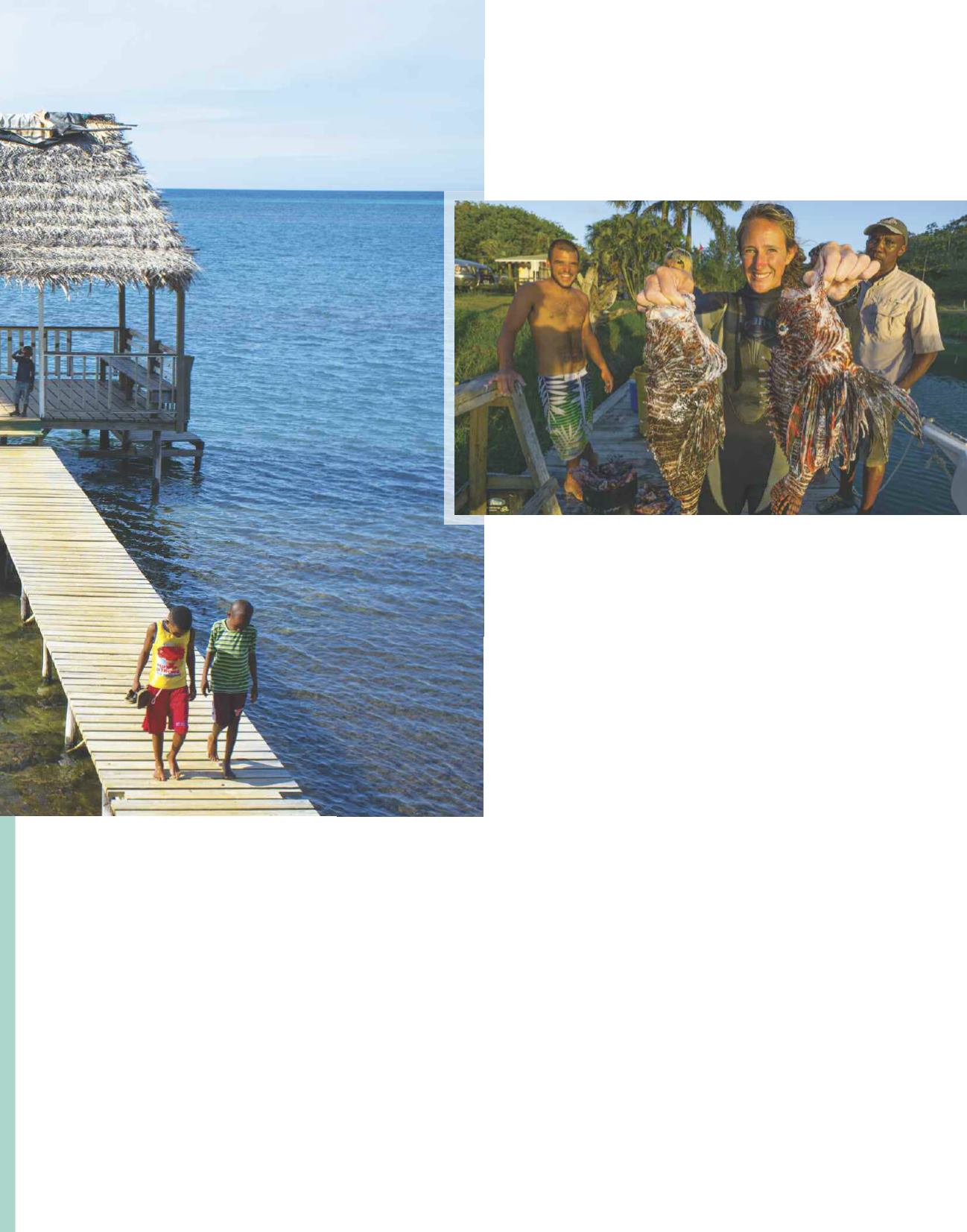

alike. Shops sell beach clothes, locally made jewelry, and wood
carvings, and residents still talk about how happy they are that the
main road was paved a few years ago.
We stop in at the nonprofit Roatán Marine Park to learn about
the reef and what’s being done to safeguard it. In 2010, Roatán’s
coast was designated a protected marine park by the Honduran
government and, due to its conservation efforts, the reef’s health
is improving despite the invasive lionfish population, which has
been decimating native species. Fortunately, Kat and I soon learn
that the lionfish may be trouble for other aquatic creatures, but for
us humans, they are delicious.
For dinner, we head to Lionfish Louie’s, a beach restaurant located
near the center of the island at the Havana Beach Club on Big Bight.
“It tastes like walleye,” says Jack Mitchell, owner of the eatery,
of the lionfish. “It’s a white meat that doesn’t taste fishy at all.”
Mitchell loves the grouper-tasting lionfish so much, he opened
his restaurant in 2014, and serves ceviche, enchiladas, fish and
chips, and other appetizers and entrees using only locally caught
lionfish.
Swimming Through History
The next day, after having witnessed a 6-foot-long moray eel swim
past me during my dive with Bananarama Dive Shop, we set off to
explore West Bay, a small community on Roatán’s western tip, next
to the West End. West Bay is quieter and doesn’t have as many
shops, but the beach here is long and wide. A 10-minute water taxi
ride takes you back and forth between West End and West Bay for
$3, so it’s easy to visit even if you don’t have a car. Kat takes the
morning to unwind with an aromatherapy massage at Serenity Day
Spa, then we stroll the beach and watch artist Gladys Agustin paint
intricate African-Caribbean style portraits at her beach booth before
heading out to Monterroso’s Bay Islands Underwater Museum at
Sandy Bay, where we literally swim through Roatán’s history. (Since
my visit, the museum has moved to Las Palmas, on the south side
of the island.)
The Mayas had a presence here, but it was the Paya people
who greeted Christopher Columbus when he stepped ashore on
Roatán in 1509. During the 1600s, English pirates, including Blackbeard
and John Coxen (for which the island’s largest town, Coxen Hole, is
named), used Roatán as a base for attacking Spanish ships. We
snorkel through the clear, sunlit water to find replica statues from the
Mayan and Paya cultures no more than 10 feet beneath the surface.
And at the end of the tour, we get a real treat: the ribs of a real
Spanish galleon teeming with fish. It’s a great way for nondivers to
experience the beauty of the reef and even wreck dive.
Steve Larese
The picturesque village of
Punta Gorda is a must-see.
INSET: The lionfish is the
star of the menu at Lionfish
Louie’s restaurant.
IntervalWorld.com INTERVAL WORLD Summer 2015
41



















